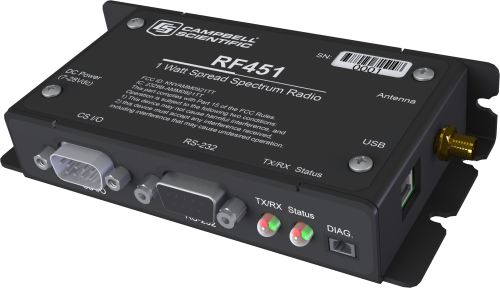
Liste de produits
| Gamme de fréquence | |||
|---|---|---|---|
RF452
|
— | ||
RF422
|
863 à 870 MHz | ||
RF452
|
— | ||
RF422
|
EMEA (Europe, Moyen Orient et Afrique) | ||
RF452
|
— | ||
RF422
|
|
||
RF416
|
2.450 à 2.482 GHz | FCC-certified module for the USA | 0,4 km with omnidirectional antenna (outdoors); up to 0.8 km (0.5 mi) with higher-gain directional antennas at ideal conditions |
RF432
|
2.450 à 2.482 GHz | — | — |
RF407
|
902 to 928 MHz | US, Canada |
|
RF451
|
902 to 928 MHz | US, Canada, Australia |
|
Autres produits
| Gamme de fréquence | Pays | Distance de transmission | |
|---|---|---|---|
RF427
|
— | — | — |
FAQ
Nombre de FAQ au sujet de(s) Radios à étalement de spectre: 5
Développer toutRéduire tout
-
No. A spread-spectrum radio, like all FCC Part 15 devices, is not allowed to cause harmful interferences to licensed radio communications and must accept any interference that it receives.
-
No. Removing the interference will remove the radio signal. The radio, like all FCC Part 15 devices, is not allowed to cause harmful interferences to licensed radio communications and must accept any interference that it receives.
-
Yes. Two spread-spectrum radios can be used to connect two computers.
-
Spread-spectrum radios work by frequency hopping and transmitting at discrete frequencies over part of the unlicensed band, rather than by transmitting over a very wide part of the spectrum as some other devices do.